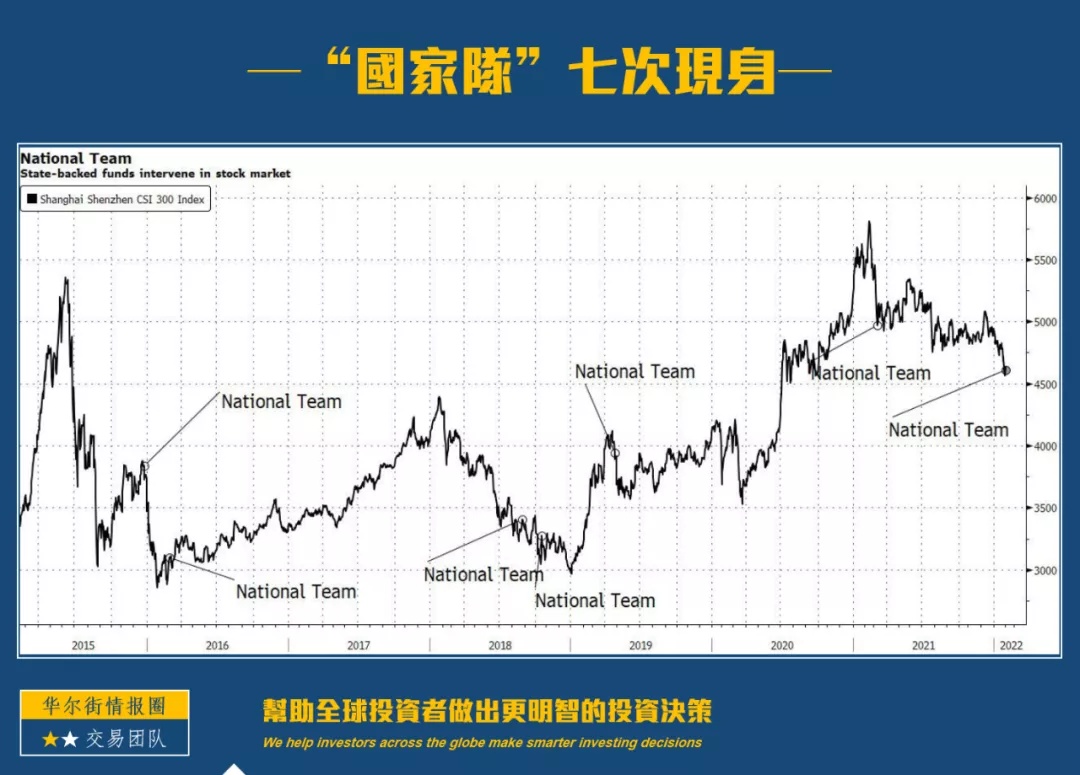-The purpose of intervention measures is to curb market volatility (restore market confidence), not to make the market rebound sharply immediately.
Today's rise in China's stock market rekindled the hope of bottoming out for some investors. Before you make the next decision, there is some news to know.
1. First of all, it was a magical rebound in late yesterday. The CSI 300 Index only fell by 0.6%, recovering most of the previous decline of 2.4%. Bloomberg News quoted two sources as saying that the funds related to the "national team" entered the market on Tuesday afternoon, which was aimed at slowing down the decline.
2. Surprisingly, however, the news from Bloomberg was subsequently denied. Chinese domestic media quoted people close to the regulatory authorities as saying that it is not true that government-related funds entered the market. What is even more surprising is that the market ignored the news of "clarification", and the stocks listed in the US soared that night.
Bloomberg has reported at least seven times since 2015 that the National came to the rescue when its share price fell. These efforts do not always stop bleeding immediately, but suppress fluctuations (which may be the purpose of intervention).
The time when the "national team" shoots always has its particularity (it usually enters the market when major events or dates require it):
-After the stock market plunged in 2016;
-During the Sino-US trade friction in 2018 and 2019;
-The last time the figure of "national team" flashed was in March 2021, when the yield of US Treasury bonds soared, which hit some highly valued Chinese stocks hard.
Some people think that the "national team" shot at this time, indicating that the stock price is already at an attractive level.
But from the time point of view, the timing is somewhat subtle:
First, the US Department of Commerce recently added 33 Chinese entities to the "unverified list", which may require listed enterprises to obtain more licenses before purchasing products from American companies.
Second, the first-stage trade agreement between China and the United States has been heated up recently. The U.S. trade deficit with China widened by $45 billion to $355.3 billion, the largest deficit since 2018, according to U.S. trade data for the whole year of 2021 released on Tuesday. Analyzing the final trade data, some agencies found that they were more than a third short of their procurement targets.
U.S. Deputy Trade Representative Bianchi said last Tuesday that the two sides are currently discussing this matter.
Therefore, in addition to economic fundamentals, Sino-US economic and trade news also deserves investors' attention.
Then how does the stock market perform after the "national team" enters the market:
(According to data compiled by Bloomberg) In the next month after entering the market, the Shanghai and Shenzhen 300 Index fell by an average of 2.3%;
In the three months after entering the market, the stock market continues to decline, but the rate of decline slows down (as the mood recovers, it may take some time to bottom out);
In the six months after entering the market, the average return rate of the stock market was 5.5%.
From this we can see that the purpose of intervention measures is to restrain market volatility (restore market confidence), not to make the market rebound sharply immediately. The "national team" usually shoots when the volatility soars to over 20% in 10 days. On average, volatility rose by 9% in the month before the intervention and fell by nearly 14% in the following month.
Note: Two weeks ago, state newspapers, including the Shanghai Securities News, called on investors not to overreact to the market decline, saying A shares were firmly supported by policies and capital flows.
$NQmain(NQmain)$ $Gold - main 2204(GCmain)$ $Light Crude Oil - main 2203(CLmain)$ $China A50 Index - main 2202(CNmain)$

Comments